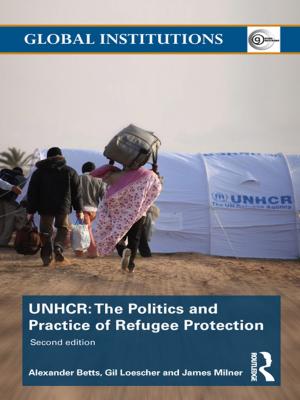The Kalamari Union: Middle Class in East and West
Nonfiction, Social & Cultural Studies, Social Science, Sociology| Author: | ISBN: | 9780429788727 | |
| Publisher: | Taylor and Francis | Publication: | May 23, 2019 |
| Imprint: | Routledge | Language: | English |
| Author: | |
| ISBN: | 9780429788727 |
| Publisher: | Taylor and Francis |
| Publication: | May 23, 2019 |
| Imprint: | Routledge |
| Language: | English |
First published in 1998, this volume asks: are new social classes in the making in eastern Europe? Are class issues withering away? How do different classes organize their lives, what kind of strategies do they adopt in East and West. Markku Kivinen brings Eastern Europe into the class debate. Recent sociological discussions have touched upon questions of class in Eastern Europe only very provisionally. On the other hand, old analyses of social stratification under conditions of 'actually existed socialism' are no longer relevant in the current situation. This book analyses processes of class relations in Eastern Europe from new theoretical vantage-points, using up-to-date empirical data. Under socialism, power was said to be vested in the working class. However, there was a constant tension between the 'holy proletariat' and the real life of the working class. Today, all political forces in Eastern Europe; leftist and liberal alike, are hankering for the middle class. This book explores the real processes in both East and West. This leads to more concrete political and even moral issues. The new 'sacred middle class' is challenged. The contributors adopt several conceptual approaches and perspectives which enter into a fruitful exchange in this book.
First published in 1998, this volume asks: are new social classes in the making in eastern Europe? Are class issues withering away? How do different classes organize their lives, what kind of strategies do they adopt in East and West. Markku Kivinen brings Eastern Europe into the class debate. Recent sociological discussions have touched upon questions of class in Eastern Europe only very provisionally. On the other hand, old analyses of social stratification under conditions of 'actually existed socialism' are no longer relevant in the current situation. This book analyses processes of class relations in Eastern Europe from new theoretical vantage-points, using up-to-date empirical data. Under socialism, power was said to be vested in the working class. However, there was a constant tension between the 'holy proletariat' and the real life of the working class. Today, all political forces in Eastern Europe; leftist and liberal alike, are hankering for the middle class. This book explores the real processes in both East and West. This leads to more concrete political and even moral issues. The new 'sacred middle class' is challenged. The contributors adopt several conceptual approaches and perspectives which enter into a fruitful exchange in this book.















